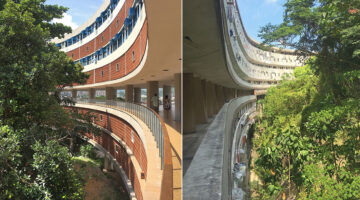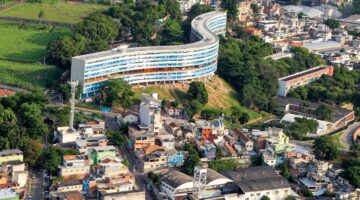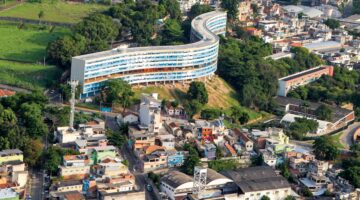



Pedregulho Housing Complex Restoration
Main objectives of the project
The restoration of the Pedregulho Housing Complex exemplifies the power of community involvement and strategic planning in revitalizing historic architectural landmarks. Led by the Pedregulho Neighbors Association and architect Alfredo Britto, the project addressed decades of neglect and deterioration, guided by a comprehensive restoration plan. By balancing the preservation of architectural character with contemporary demands, such as parking and security, the project not only restored Pedregulho to its former glory but also empowered residents to take ownership of their living environment. This successful restoration effort stands as a testament to the importance of community engagement in preserving cultural heritage for future generations.
Date
- 2010: Construction
- 2004: Implementation
Stakeholders
- Pedregulho Neighbors Association
- Architect: Alfredo Britto
- Promotor: Companhia Estadual de Habitação do Rio de Janeiro
Location
City: Rio de Janeiro
Country/Region: Brazil, Rio de Janeiro
Description
Constructed between 1946 and 1948 in São Cristóvão, a neighborhood north of Rio de Janeiro, the Pedregulho Housing Complex provided 522 units for low-income municipal employees, featuring a comprehensive range of facilities and social services. Designed by architect Affonso Eduardo Reidy, the complex adhered to urban principles outlined by the International Congress of Modern Architecture (CIAM), complemented by landscape design from renowned architect Burle Marx. Despite being a prominent example of modern Brazilian architecture, Pedregulho was part of a larger initiative by the Rio de Janeiro Department of People’s Housing, inspired by post-World War II British city reconstruction efforts. Inaugurated in 1950, the complex initially served as a relocation site for residents of informal settlements. However, by the 1960s and 1970s, neglect, disorderly occupation, and wear and tear led to its decline. Although recognized as a cultural monument in 1986, Pedregulho received minimal investment until 2002 when residents initiated a renovation campaign.
Led by the Pedregulho Neighbors Association and architect Alfredo Britto, the renovation efforts began in 2004 with the introduction of a Strategic Restoration Plan. TThe strategic guidelines encompassed several key aspects: maintaining the complex's architectural and urban character, adhering to its original intentions while restoring functionality, preserving existing materials and characteristics if compatible with proposed uses and restoration costs, and addressing contemporary demands and needs without compromising overarching restoration criteria. These contemporary demands include provisions for parking, television antennas, outdoor clotheslines, housing complex security, and garbage collection.
Restoration work commenced in 2010, addressing technical, social, and financial challenges, including residents' continued occupancy during renovation. To foster community involvement, job opportunities were provided to residents, with association leaders mediating between technical and resident concerns. Social workers facilitated ongoing dialogue and highlighted the complex's cultural value.
The restoration of Pedregulho reflects the broader need to revitalize existing housing complexes facing qualitative deficits over time. Community involvement was integral to the project's success, preventing unwanted gentrification and ensuring the active participation of original residents. A permanent maintenance committee further sustains resident engagement, underscoring their commitment to preserving their homes for the future.

